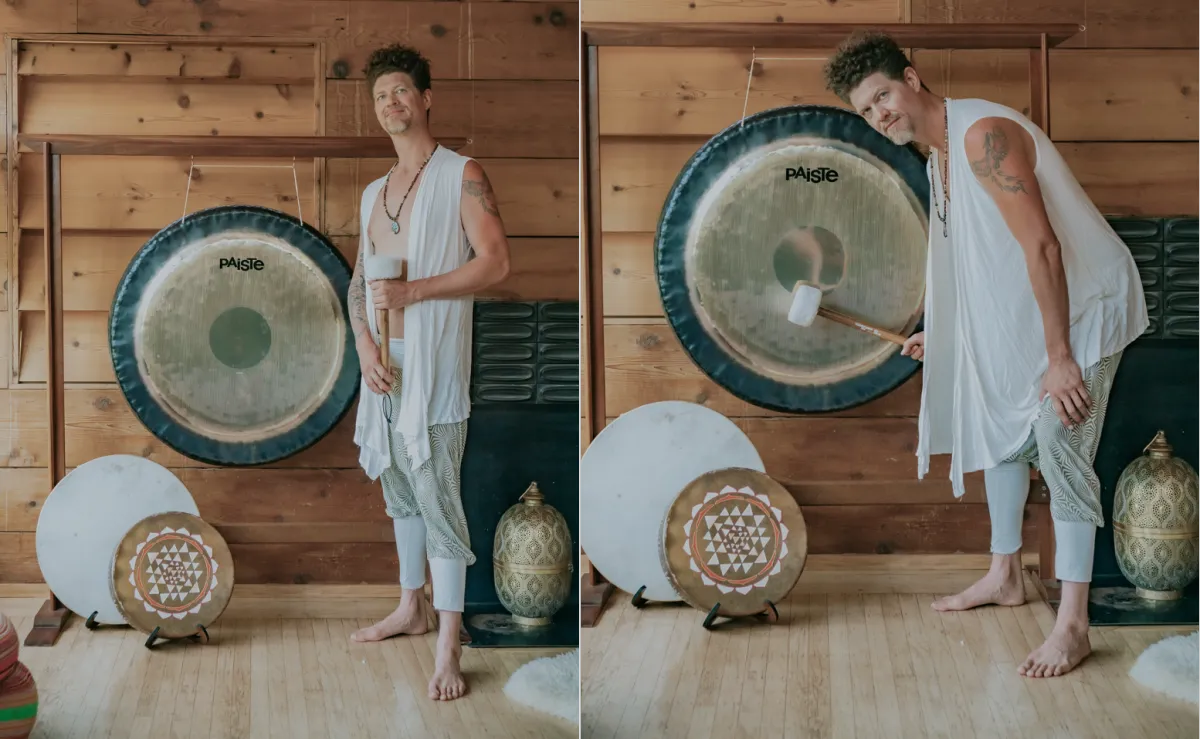
The Sound Bath Experience: How One Ancient Instrument Still Resonates Today
In a world that rarely stops humming, there’s something reassuring about an ancient object that knows how to do just that—to hum, vibrate, and resonate. The gong isn’t a trendy gadget or a minimalist decor piece. It’s a Bronze Age creation still quietly finding its place in modern wellness routines, especially in spaces designed for slowing down and tuning in.
You don’t need to be a sound healer, a yogi, or a spiritual seeker to appreciate the effects of a gong. All you really need is a moment—and a little curiosity. The gong is surprisingly easy to place, and in the stillness that follows its tone, something subtle and significant happens. You exhale and return to yourself.
The Ancient Roots of a Modern Reset
The gong predates most tools in our modern lives. Historians trace its use back to ancient China, India, and the Middle East, where it played ceremonial, spiritual, and social roles.
Today, the same instrument is being rediscovered in retreat spaces and meditation rooms. Neuroscience is beginning to catch up with what ancient cultures long understood: the long, low-frequency vibrations of a gong can reduce stress, calm the nervous system, and activate brain states linked to rest and recovery. No incense required.
Sound Baths: More Than a Trend
The term Sound Bath may sound like wellness-speak, but the experience goes far deeper. Unlike traditional music, which engages the mind, a Sound Bath with a gongs (and sometimes with singing bowls, chimes, and other instruments too) creates an immersive, full-body experience. It quiets the mind not through melody, but through resonance.
You don’t analyze a sound bath—you feel it.
It’s the difference between background noise and a moment that invites your full, quiet attention.
For busy professionals—especially in the high-energy atmosphere of the Bay Area—the idea of intentional stillness can feel unfamiliar, even indulgent. But the paradox is this: slowing down is not a waste of time. It’s a recalibration—a way back to clarity, focus, and well-being.
The Gong as a Listening Tool
To listen to a gong is to listen differently. It invites you out of productivity mode and into presence. In a sound bath, there’s nothing to achieve. The goal, if there is one, is simply to receive. That shift—from doing to being—often brings unexpected relief. Like exhaling after holding your breath.
In that suspended space, the sound becomes a kind of guide. It doesn’t speak in words, but it invites reflection. It doesn’t fix, but it facilitates. And unlike much of the noise we navigate daily, the gong doesn’t demand your attention. It earns it—gently.
From Overstimulated to Attuned
These days, sensory overload is a baseline—screens, traffic, conversations, schedules. It’s no wonder our systems crave stillness. A Sound Bath is a gentle antidote. It doesn’t numb or distract. It attunes.
People often describe feeling lighter after a gong session. Not because they’ve escaped reality, but because they’ve reconnected with something simpler: a steady rhythm, a deep breath, a quiet center. The experience is personal, but the outcome is often the same—a clearer mind, a calmer body, and a softened nervous system.
Modern Spaces, Ancient Sounds
Especially in the Bay Area, gongs are showing up in more wellness spaces and nature-immersed retreats. In these settings, the gong isn’t just an instrument—it’s an offering. A reminder that life doesn’t have to be fast to be fulfilling.
In a region this vibrant and driven, that kind of spaciousness isn’t just a luxury—it’s essential. If you’re craving quiet, resonance, or a moment to reset, consider this your invitation.

P.S. Looking for a peaceful retreat in Mill Valley? The Enchanted Waterfall Sanctuary offers just that—plus your own private gong to explore. It’s easy to play and sounds beautiful, even with the simplest strike. If you want a deeper experience, you can also book a professional sound bath session right in the space. Either way, it’s an invitation to slow down and reconnect—on your terms.


